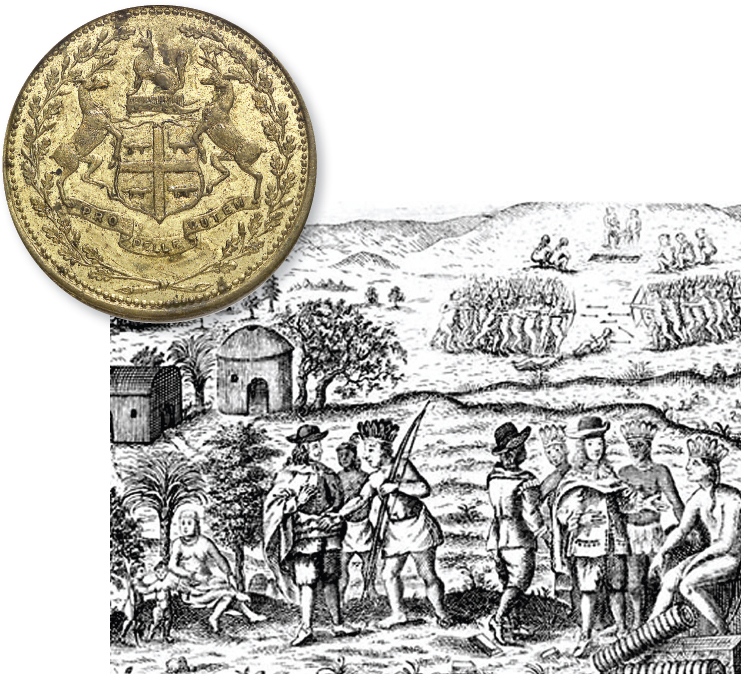Understanding World Societies:
Printed Page 534
> How did European nations compete for global trade and empire in the Americas and Asia?
FFOR MUCH OF THE SIXTEENTH CENTURY, the Spanish and Portuguese dominated European overseas trade and colonization (see Chapter 16). In the early seventeenth century, however, England, France, and the Netherlands challenged Spain’s monopoly.

The Fur Trade
In the early seventeenth century, European fur traders relied on Native Americans’ expertise and experience, leading to the equal relations depicted in this scene from the colony of New Sweden (in modern-day Pennsylvania). The action in the background shows violence among indigenous groups, rivalries exacerbated by contact with Europeans and their trade goods. Hudson’s Bay Company, the English colonial trading company, issued its own tokens as currency in the fur trade. This token, dating from the mid-nineteenth century, displays the company’s crest, which says “a skin for a skin” in Latin. Two stags face each other, with a fox at the top and four beavers on the shield. Traders received tokens for the pelts they sold and could use them to purchase goods from the company’s store. European demand for beaver hats, made from the felted pelts of beavers, drove the tremendous expansion of the North American fur trade in the beginning of the seventeenth century. (engraving: From Geographia Americae with An Account of the Delaware Indians, Based on Surveys and Notes Made 1654–1656 , by Peter Lindestrom, published by The Swedish Colonial Society/Visual Connection Archive; token: © National Maritime Museum, London, UK/The Image Works)
In the early seventeenth century, European fur traders relied on Native Americans’ expertise and experience, leading to the equal relations depicted in this scene from the colony of New Sweden (in modern-